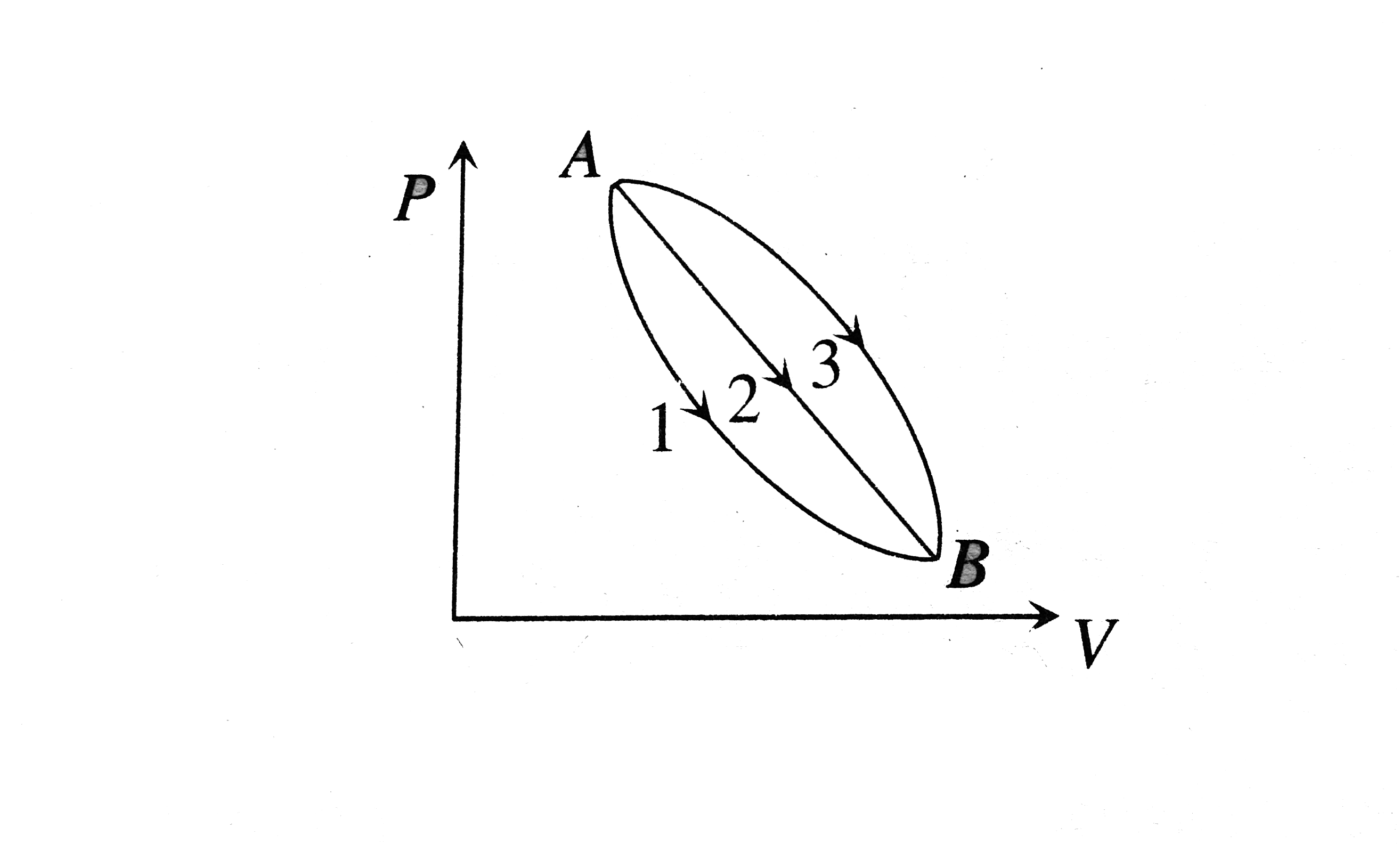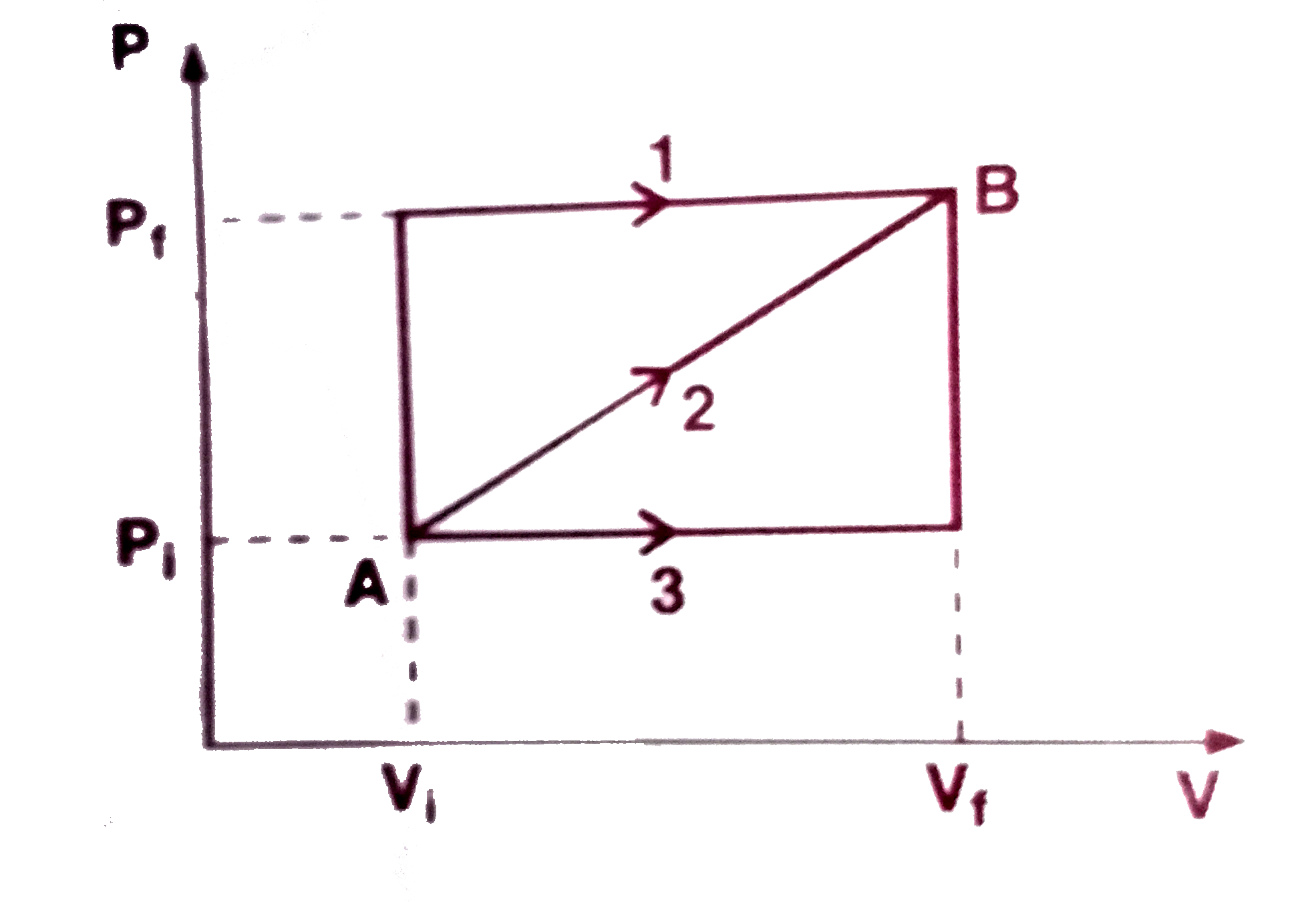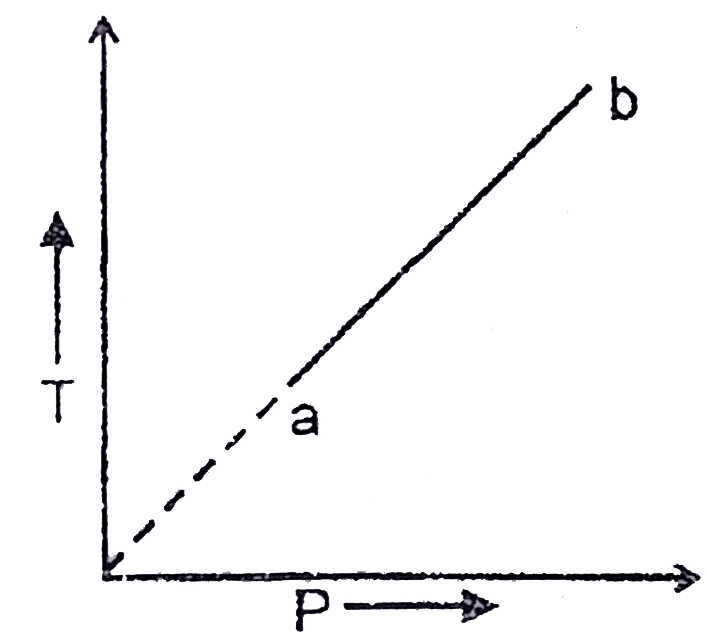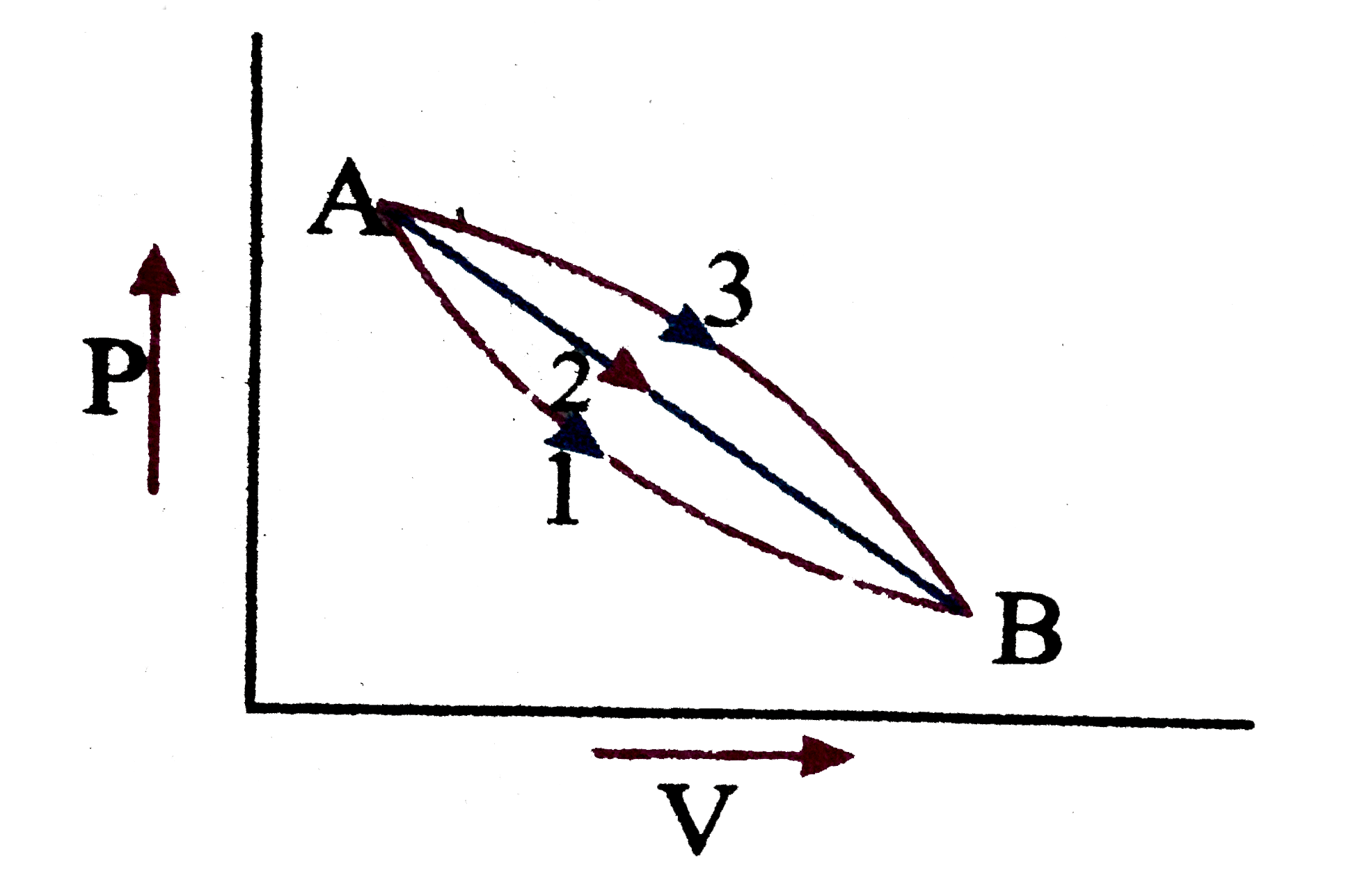An ideal gas of mass m is taken from state A to state B (fig) in three different processes 1,2 and 3. If the work done in the three processes are W1,W2 and W3, arrange them in descending order.

The area under a curve on a pV diagram represents the work done in the corresponding process. In fig., area A3BDCA>areaA2BDCA>areaA1BDCA.
So, W3>W2>W1.
Topper's Solved these Questions
- FIRST AND SECOND LAW OF THERMODYNAMICSBOOK - CHHAYA PUBLICATIONCHAPTER - FIRST AND SECOND LAW OF THERMODYNAMICSEXERCISE - Exercise - Multiple Choice Questions (Mark 1)
31 Videos
- FIRST AND SECOND LAW OF THERMODYNAMICSBOOK - CHHAYA PUBLICATIONCHAPTER - FIRST AND SECOND LAW OF THERMODYNAMICSEXERCISE - Exercise - Very Short Answer Type Questions (Mark 1)
53 Videos
- FIRST AND SECOND LAW OF THERMODYNAMICSBOOK - CHHAYA PUBLICATIONCHAPTER - FIRST AND SECOND LAW OF THERMODYNAMICSEXERCISE - Section Related Questions
50 Videos
- EXPANSION OF SOLIDS AND LIQUIDSBOOK - CHHAYA PUBLICATIONCHAPTER - EXPANSION OF SOLIDS AND LIQUIDSEXERCISE - CBSE SCANNER
2 Videos
- FRICTION BOOK - CHHAYA PUBLICATIONCHAPTER - FRICTION EXERCISE - CBSE SCANNER
7 Videos
Similar Questions
A system is taken from state A to state B along two different paths 1 and 2 . The heat absorbed and work done by the system along these two paths are Q1 and W1 and W2 respectively.
View SolutionAn ideal gas of mass m in a state A goes to another state B via three different processes as shown in Fig. If Q1,Q2 and Q3 denote the heat absorbed by the gas along the three paths, then

View Solution
Knowledge Check
A system is taken from state A to B through three different paths 1,2 and 3. The work done is maximum is :
 Aprocess 1Bprocess 2Cprocess 3Dequal in all magnitude
Aprocess 1Bprocess 2Cprocess 3Dequal in all magnitudeA system is taken from state A to state N along two different paths 1 and 2. The heat absorbed and work done by system along these two paths are Q1 and Q2, and W1 and W2 respectively. Then
AQ1=Q2BW1=W2CQ1−W1=Q2−W2DQ1+W1=Q2+W2A gas of given mass, is brought from stage A to B along three paths 1, 2 and 3, as shown in the figure. If the amount of work done in these three processes is respectively equal to W1,W2 and W3, then–
 AW1>W2>W3BW1<W2<W3CW1=W2=W3DW1<W2,W3<W2
AW1>W2>W3BW1<W2<W3CW1=W2=W3DW1<W2,W3<W2
An ideal gas change from state a to state b as shown in Fig. what is the work done by the gas in the process?

View SolutionAn ideal gas of mass m in a state A goes to another state B via three different processes as shown in Fig. If Q1,Q2 and Q3 denote the heat absorbed by the gas along the three paths, then

View SolutionAn ideal gas change from state a to state b as shown in Fig. what is the work done by the gas in the process?

View SolutionAn ideal gas change from state a to state b as shown in Fig. what is the work done by the gas in the process?

View SolutionA given mass of a gas expands from the state A to the state B by three paths 1,2 and 3 as shown in the figure, If W1,W2 and W3 respectively be the work done by the gas along the three paths then

View Solution
